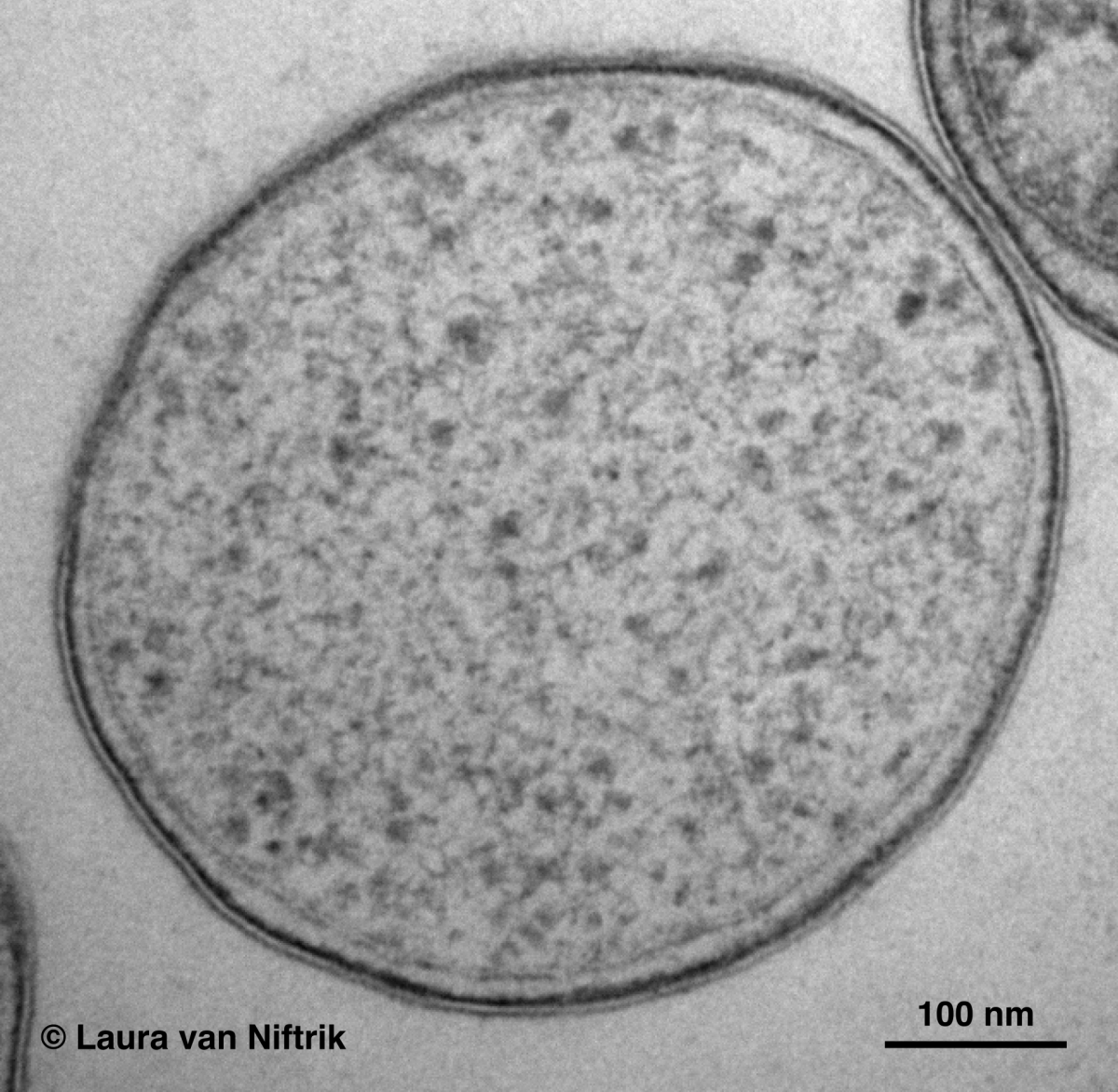- Press Office
- Press releases 2020
- When methane-eating microbes eat ammonia instead
When methane-eating microbes eat ammonia instead
Some microorganisms, the so-called methanotrophs, make a living by oxidizing methane (CH4) to carbon dioxide (CO2). Ammonia (NH3) is structurally very similar to methane, thus methanotrophs also co-metabolize ammonia and produce nitrite. While this process was observed in cell cultures, the underlying biochemical mechanism was not understood. Boran Kartal, head of the Microbial Physiology Group at the Max Planck Institute for Marine Microbiology in Bremen, Germany, and a group of scientists from Radboud University in Nijmegen, The Netherlands, now shed light on an exciting missing link in the process: the production of nitric oxide (NO).
Nitric oxide is a highly reactive and toxic molecule with fascinating and versatile roles in biology and atmospheric chemistry. It is a signaling molecule, the precursor of the potent greenhouse gas nitrous oxide (N2O), depletes the ozone layer in our atmosphere, and a key intermediate in the global nitrogen cycle. It now turns out that NO is also the key for the survival of methanotrophs that face ammonia in the environment – which they do more and more as fertilizer input into nature increases. When methanotrophs co-metabolize ammonia they initially produce hydroxylamine, which inhibits other important metabolic processes, resulting in cell death. Thus, methanotrophs need to get rid of hydroxylamine as fast as possible. “Carrying a hydroxylamine-converting enzyme is a matter of life or death for methane-eating microbes”, Kartal says.
For their study, Kartal and his colleagues used a methanotrophic bacterium named Methylacidiphilum fumariolicum, which originates from a volcanic mud pot, characterized by high temperatures and low pH, in the vicinity of Mount Vesuvius in Italy. “From this microbe, we purified a hydroxylamine oxidoreductase (mHAO) enzyme,“ reports Kartal. “Previously it was believed that mHAO enzyme would oxidize hydroxylamine to nitrite in methanotrophs. We now showed that it actually rapidly produces NO.” The mHAO enzyme is very similar to the one used by “actual” ammonia oxidizers, which is quite astonishing, as Kartal explains: “It is now clear that enzymatically there is not much difference between aerobic ammonia- and methane-oxidizing bacteria. Using essentially the same set of enzymes, methanotrophs can act as de facto ammonia oxidizers in the environment. Still, how these microbes oxidize NO further to nitrite remains unknown.”
The adaptation of the mHAO enzyme to the hot volcanic mud pots is also intriguing, Kartal believes: “At the amino acid level, the mHAO and its counterpart from ammonia oxidizers are very similar, but the protein we isolated from M. fumariolicum thrives at temperatures up to 80 °C, almost 30 °C above the temperature optimum of their “actual” ammonia-oxidizing relatives. Understanding how so similar enzymes have such different temperature optima and range will be very interesting to investigate.”
According to Kartal, production of NO from ammonia has further implications for methane-eating microbes: “Currently there are no known methanotrophs that can make a living out of ammonia oxidation to nitrite via NO, but there could be methanotrophs out there that found a way to connect ammonia conversion to cell growth.”
Original publication
Wouter Versantvoort, Arjan Pol, Mike S. M. Jetten, Laura van Niftrik, Joachim Reimann, Boran Kartal, and Huub J. M. Op den Camp: Multiheme hydroxylamine oxidoreductases produce NO during ammonia oxidation in methanotrophs. PNAS. September 2020.
Participating institutions
Max Planck Institute for Marine Microbiology, Bremen, Germany
Radboud University, Nijmegen, The Netherlands
Please direct your queries to:
Group leader
Microbial Physiology Research Group
MPI for Marine Microbiology
Celsiusstr. 1
D-28359 Bremen
Germany
|
Room: |
3126 |
|
Phone: |

Head of Press & Communications
MPI for Marine Microbiology
Celsiusstr. 1
D-28359 Bremen
Germany
|
Room: |
1345 |
|
Phone: |


